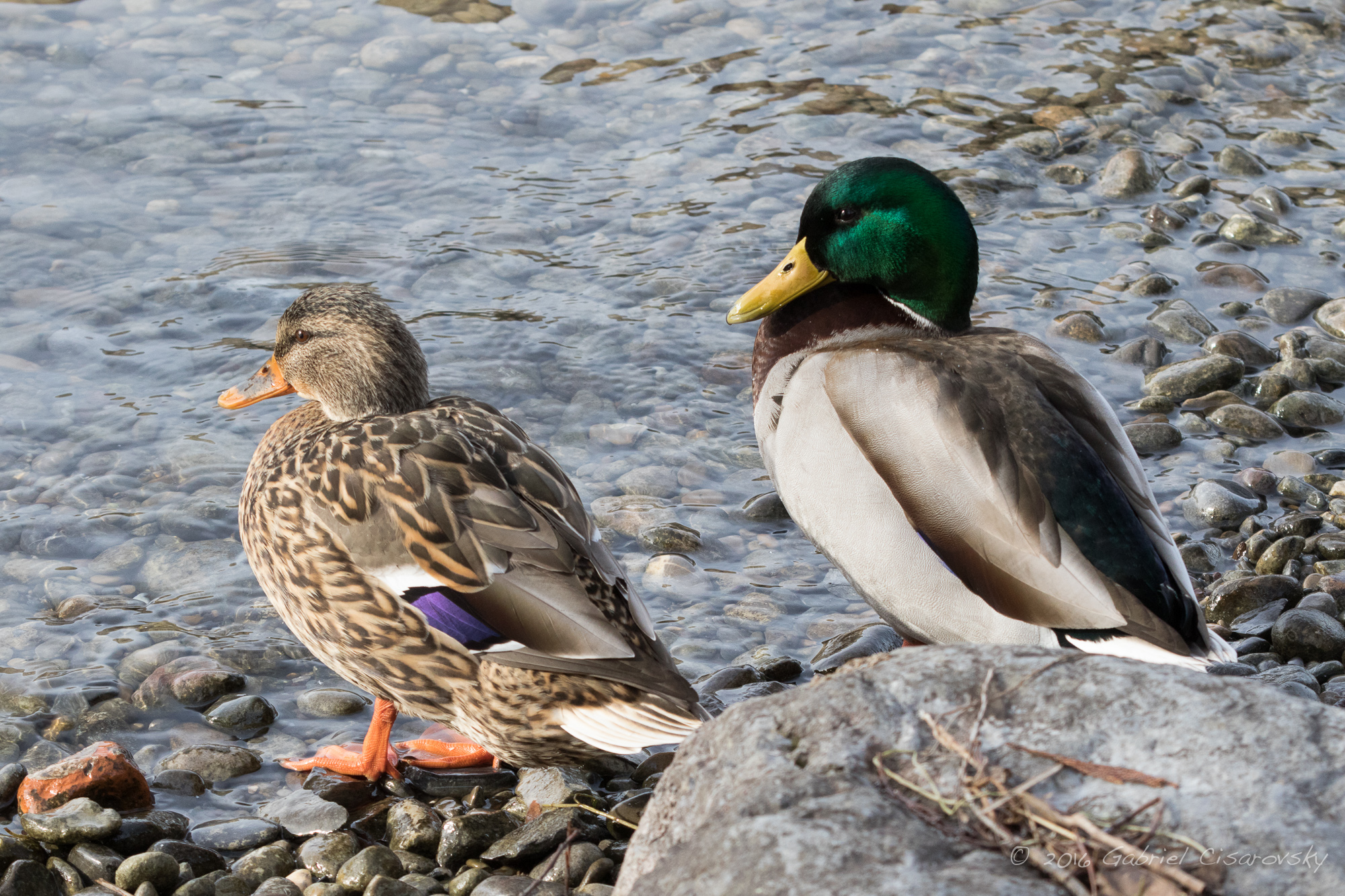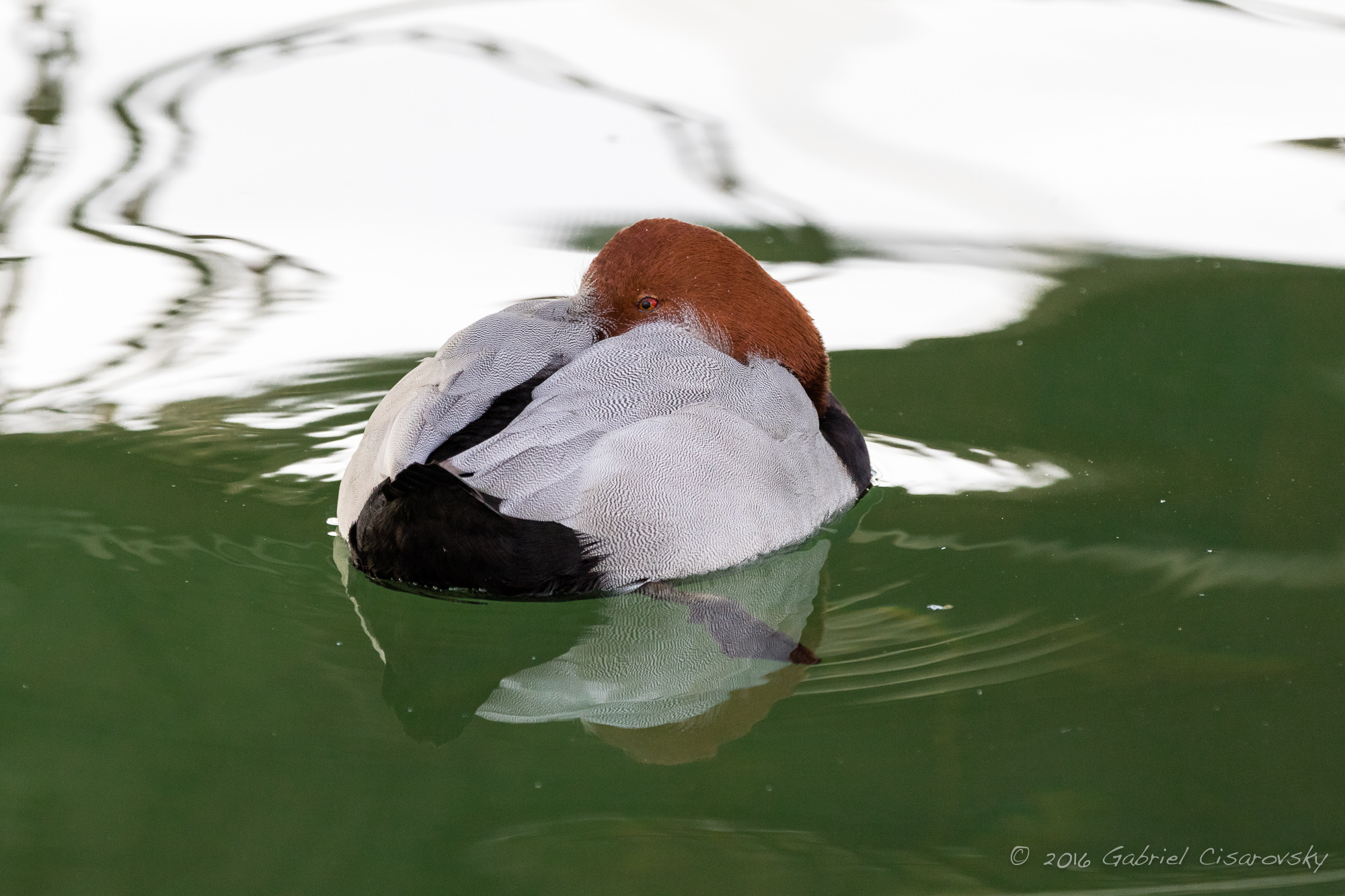Dive Switzerland
Bird species
Mute swan (Cygnus olor)
Information: The geographic range of the mute swan was originally restricted to Northeastern Europe and parts of Asia. These majestic swans were popular ornamental and park birds already in the Middle Ages. Louis XIV introduced swans to the Seine, and Napoleon issued instructions for their protection. During the 20th century especially, mute swans spread rapidly from ponds in palace gardens and parks. The pairs often remain together for life. They are known for their loud throbbing of wings in flight, their threat pose with neck curved back and their mating display. If necessary, they defend their nest and young by striking hard with their wings. Status (CH): Widespread, introduced resident. Habitat: Lakes, rivers and streams. Food: Plants. Reproduction: Big nests on the bank between March and June. One brood per year; clutch size 5-8 eggs. Extinction risk: CH: Least concern; Europe: Least concern; Global: Least concern.
Black-headed gull (Larus ridibundus)
Information: Common black-headed gulls are regular visitors on our lakes and brighten many a grey winter's day. It is hard to imagine winters without their acrobatic and skilful flights in which they smartly snatch bread away from ducks that are being fed. These opportunistic feeders find a wide range of food in human settlements. The common black-headed gull was given its scientific name, meaning laughing gull, due to its chuckling or laughing calls. Status (CH): Locally breeding resident, regular, common migrant and winter visitor. Habitat: Lakes, rivers and streams, wetlands, farmland, settlements. Food: Earthworms, fish, insects, fruits, rubbish. Reproduction: Nests on the ground between April and July. One brood per year; clutch size 2-3 eggs. Extinction risk: CH: Endangered; Europe: Least concern; Global: Least concern.
Yellow-legged gull (Larus michahellis)
Information: The yellow-legged gull is the only large gull to breed in Switzerland. It was considered to be the same species as the herring gull. However, now the yellow-legged Gull and the Caspian gull have been classified as two separate species for new researches have shown that their genomes differ substantially. The yellow-legged gull began to colonize Switzerland during the 1960s. The number of colonies and breeding pairs has strongly increased and the species started to nest in close proximity to humans. Status (CH): Locally breeding resident, regular, common summer and winter visitor. Habitat: lakes, rivers and streams, wetlands, farmland, settlements. Food: crustaceans, fish, earthworms, insects, birds, mammals, carcasses, rubbish. Reproduction: Nests on the ground or buildings between April and July. One brood per year; clutch size 2-3 eggs. Extinction risk: CH: Least concern; Europe: Least concern; Global: Least concern.
Eurasian coot (Fulica atra)
Information: After the mallard, the Eurasian coot is the most widely distributed and most abundant breeding waterbird in Switzerland. In winter, many visitors from northern regions join the breeding birds. Of all rails, the Eurasian coot is the most bound to water and may be encountered even in the middle of large lakes. It is the only native member of the rail family to have lobed toes. Status (CH): Regular, common breeder, migrant and winter visitor. Habitat: Wetlands, lakes, rivers and streams. Food: Plants, mussels, snails, insects. Reproduction: From April to August. Floating nests anchored in the reeds. One brood per year; clutch size 3-12 eggs. Extinction risk: CH: Least concern; Europe: Near threatened; Global: Least concern.
Common mallard (Anas platyrhynchos)
Information: For many people the mallard is quite simply the wild duck. It is the most widely distributed dabbling duck in the world and also the ancestor of our domestic duck. Mallards are extraordinarily adaptable and breed in a number of habitats from Siberia to the southern tropics. Moreover, they are hardly shy of humans and often gather at feeding places. They also nest in the middle of towns in window boxes, on flat roofs and on balconies. Ducks with varying colours of white or dark sections of feathers often occur. These are hybrids between mallards and domestic ducks. Status (CH): Regular, common breeder, migrant and winter visitor. Habitat: Lakes, rivers and streams, wetlands, farmland, settlements. Food: Plants, seeds, insects, snails. Reproduction: Nests on the ground, close to the shore, hidden. One brood per year; clutch size 8-12 eggs. Extinction risk: CH: Least concern; Europe: Least concern; Global: Least concern.
Great crested grebe (Podiceps cristatus)
Information: The great crested grebe is the most conspicuous and most familiar species nesting in reedbeds on our lakes. The head-to-head courtship displays are a fascinating sight. When the two partners alternately curtsy to each other whilst shaking their heads, the space between their necks becomes heart-shaped. The courtship display reaches its climax when the partners dive and subsequently rise breast to breast presenting each other with pieces of plants suited for the construction of the nest. Status (CH): Regular, common breeder, migrant and winter visitor. Habitat: Lakes, rivers and streams. Food: Fish. Reproduction: From April to August. Swimming nests. 1-2 brood per year; clutch size 3-6 eggs. Extinction risk: CH: Least concern; Europe: Least concern; Global: Least concern.
Common pochard (Aythya ferina)
Information: The common pochard is very well adapted to diving, with its legs lying to the rear of its body. In case of danger, it prefers to swim away, because, as with all diving ducks, it first has to run on the water surface to be able to take off. Once they are in the air, they fly fast and mostly in close formation. Some of our winter visitors come from the remotest regions of Siberia. The common pochard often socialises with the tufted duck, and since the arrival of the zebra mussel, Dreissena polymorpha, it is the second most common duck species in winter. Status (CH): Rare, local breeder, regular, common migrant and winter visitor. Habitat: Lakes, rivers and streams. Food: Plants. Reproduction: From May to July. Nests on the ground. One brood per year; clutch size 6-11 eggs. Extinction risk: CH: Endangered (but never very frequent); Europe: Vulnerable; Global: Vulnerable.
Tufted duck (Aythya fuligula)
Information: Have you ever watched tufted ducks with their typical head tuft dive for food under water and then pop up like a cork without getting wet? This behaviour can be observed at close range in harbours or from bridges, especially with birds that are not at all shy. Nowadays, the tufted duck is the most common duck species in our waters and has benefited greatly from the invasion of the zebra mussel, Dreissena polymorpha, which it preferably feeds on. Status (CH): Regular, scarce breeder, common migrant and winter visitor. Habitat: Lakes, rivers and streams. Food: Mussels, seeds, insects. Reproduction: From May to August. Nests on the ground. One brood per year; clutch size 6-14 eggs. Extinction risk: CH: Vulnerable; Europe: Least concern; Global: Least concern.
Great cormorant (Phalacrocorax carbo)
Information: In autumn, the great cormorant is very evident when large flocks gather on our lakes for fishing or when they spread out their wings to dry. Thanks to the protection of breeding colonies in northern Europe, the winter population has increased noticeably in Switzerland, and since 2001 the species is also breeding in our country. These perfect divers often fish in groups, guaranteeing a higher hunting success. Status (CH): Local breeder, regular, common migrant and winter visitor. Habitat: Lakes, rivers and streams. Food: Fish. Reproduction: From March to July. Nests in trees or on the ground. One brood per year; clutch size 3-4 eggs. Extinction risk: CH: Least concern; Europe: Least concern; Global: Least concern.
Sources Swiss Federal Office for the Environment (2010) The Red List of breeding birds (only summary available in English). | Swiss Ornithological Institute (Vogelwarte) | BirdLife International (2015) European Red List of Birds Luxembourg: Office for Official Publications of the European Communities. | The IUCN Red List of Threatened Species. Version 2019-1.








